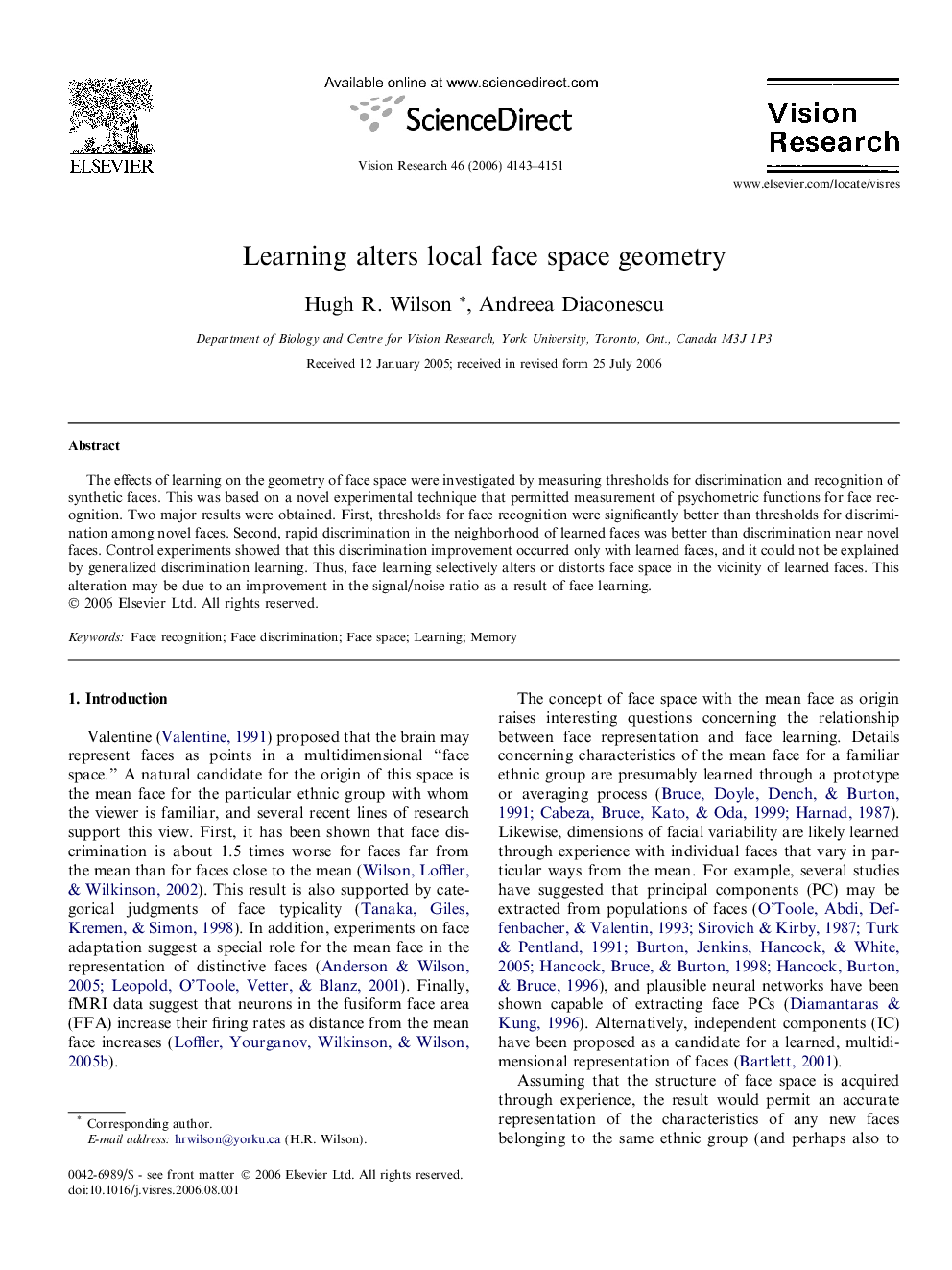| Article ID | Journal | Published Year | Pages | File Type |
|---|---|---|---|---|
| 4035913 | Vision Research | 2006 | 9 Pages |
The effects of learning on the geometry of face space were investigated by measuring thresholds for discrimination and recognition of synthetic faces. This was based on a novel experimental technique that permitted measurement of psychometric functions for face recognition. Two major results were obtained. First, thresholds for face recognition were significantly better than thresholds for discrimination among novel faces. Second, rapid discrimination in the neighborhood of learned faces was better than discrimination near novel faces. Control experiments showed that this discrimination improvement occurred only with learned faces, and it could not be explained by generalized discrimination learning. Thus, face learning selectively alters or distorts face space in the vicinity of learned faces. This alteration may be due to an improvement in the signal/noise ratio as a result of face learning.
